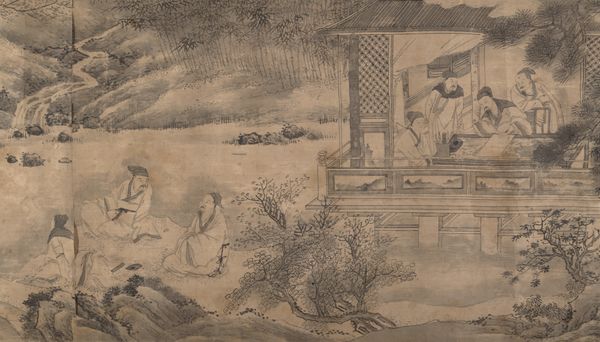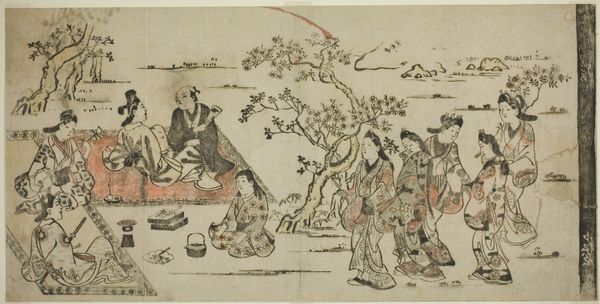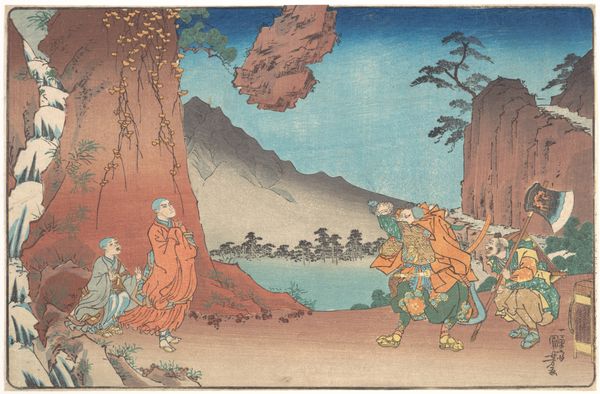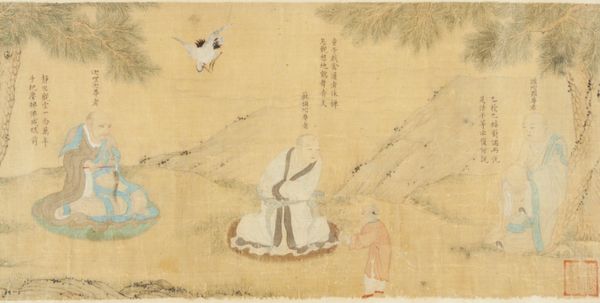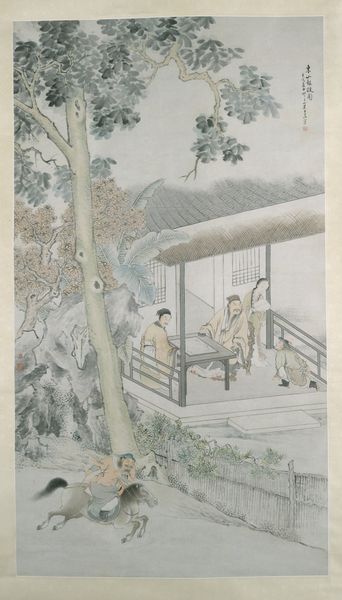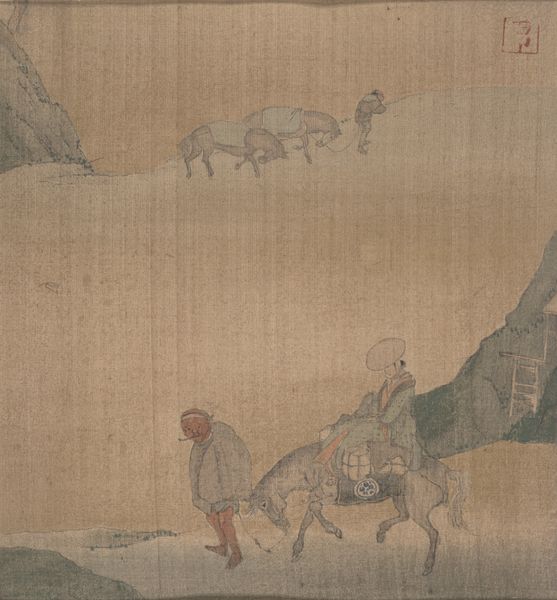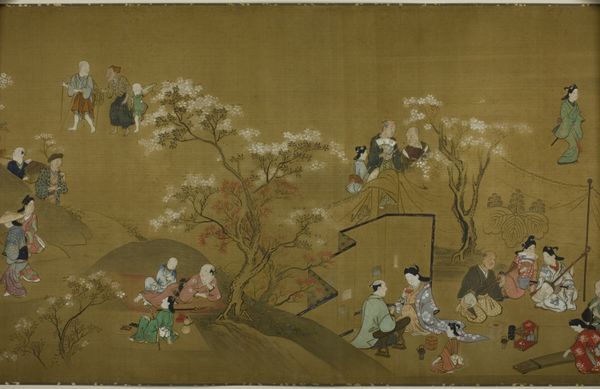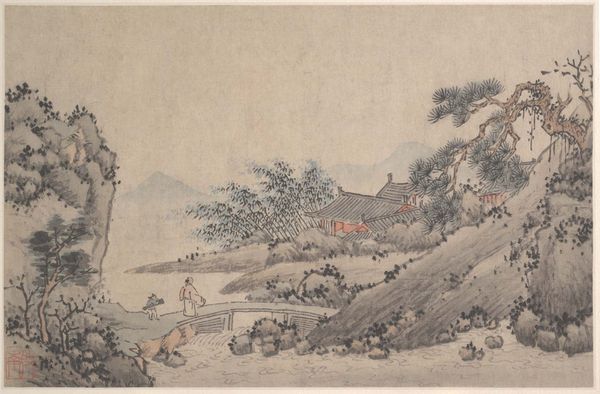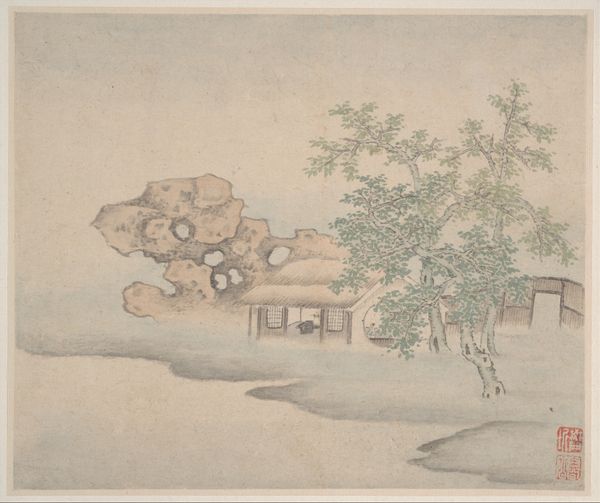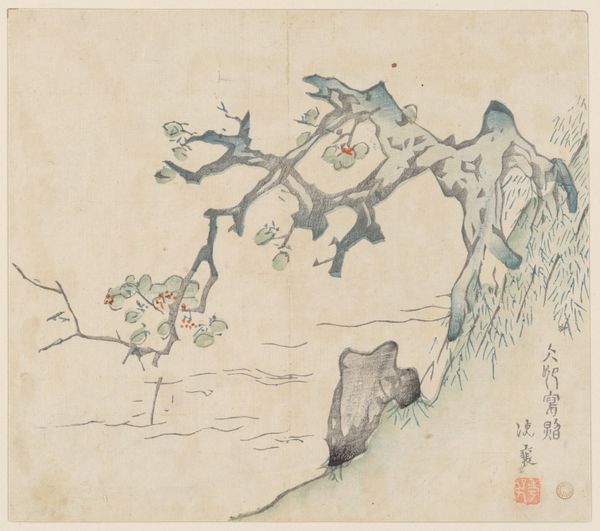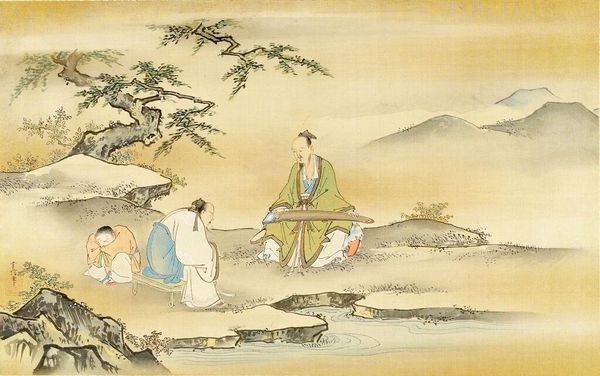
painting, ink
#
ink painting
#
painting
#
asian-art
#
landscape
#
figuration
#
ink
#
history-painting
Dimensions: Image: 9 1/2 x 171 1/2 in. (24.1 x 435.6 cm) Overall with mounting: 9 3/4 x 491 3/8 in. (24.8 x 1248.1 cm)
Copyright: Public Domain
Curator: Qian Gu's "Gathering at the Orchid Pavilion," made around 1560, now residing at The Met. A scene rendered with ink on paper. Editor: It strikes me as wonderfully peaceful. A sense of contained joy, everyone clustered in small groups, yet existing within this grand, almost dreamlike landscape. Curator: Ink as a material dictates a certain kind of labor and skill. This isn’t simply a painting, but an embodiment of calligraphic technique, applied to figuration and landscape, thus integrating craftsmanship within artistic expression. Editor: Yes! And notice the fluidity. It feels less like a rigid depiction and more like capturing a moment, an emotion, the very essence of that gathering. The light washes and soft contours imbue a sense of fleeting beauty, don't you think? As if they're sharing jokes and contemplating existence all at once. Curator: Considering its historical context, the image functions as both documentation and propaganda. Highlighting the importance of gatherings, where scholarly debate and social cohesion reinforce a hierarchy of power and production of knowledge. What they discuss or drink is likely less important than the display of social capital, visually codified here. Editor: So, almost a PR event portrayed with profound elegance. That tension fascinates me: individual expression set within social, even political performance. Each of the small gatherings looks genuinely engrossed. Curator: Exactly. These men weren't merely socializing; they were engaging in rituals of elite class cohesion. Materials reflect values; brushstrokes articulate social relationships. The very consumption of the artwork further solidifies these ideological frameworks. Editor: It’s a reminder that art, even something as seemingly simple as friends chatting amongst nature, always exists within a larger web of social forces, of give and take between intention, expression, and interpretation. I really could spend all day reading their body language and what may have been discussed on that perfect day. Curator: Art, indeed, serves as both reflection and perpetuation, which should be carefully deconstructed and considered when faced with such seemingly beautiful renderings. Editor: And here we are, adding our layers of interpretation to the ripple effect through history. Thank you!
Comments
No comments
Be the first to comment and join the conversation on the ultimate creative platform.
